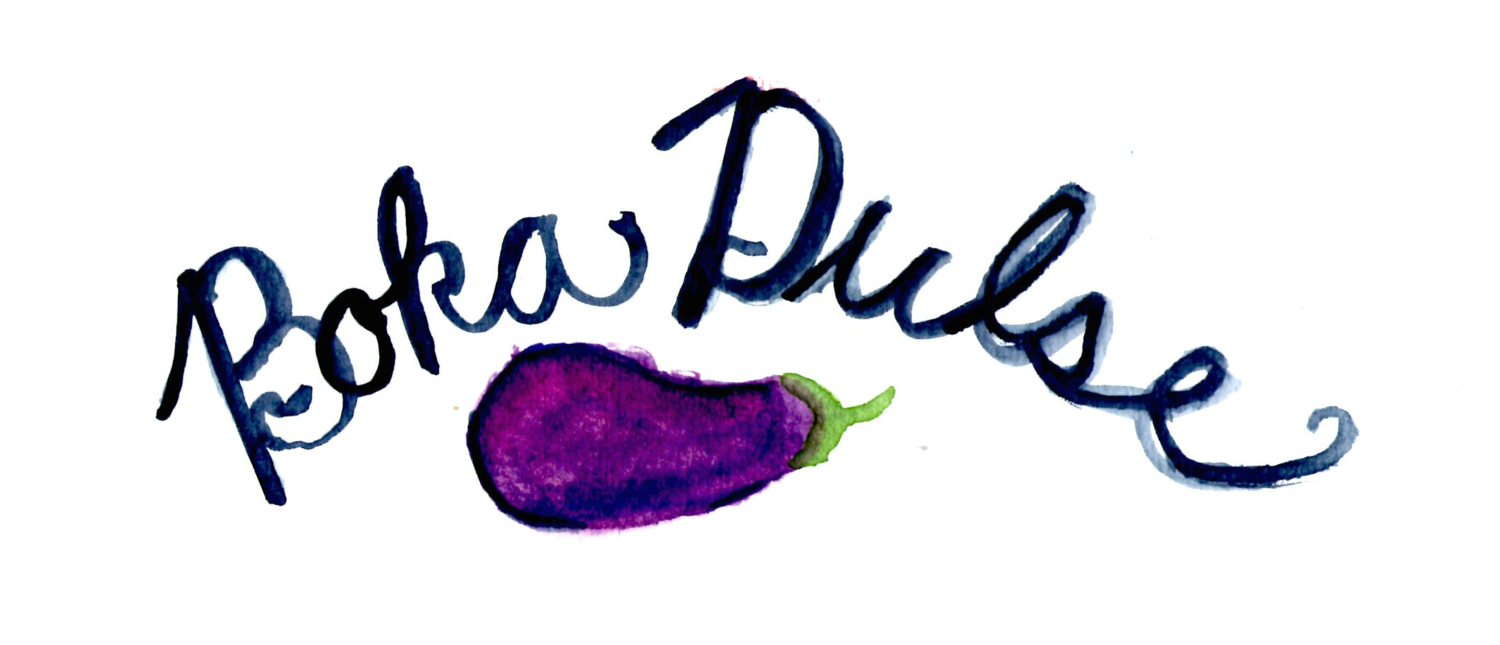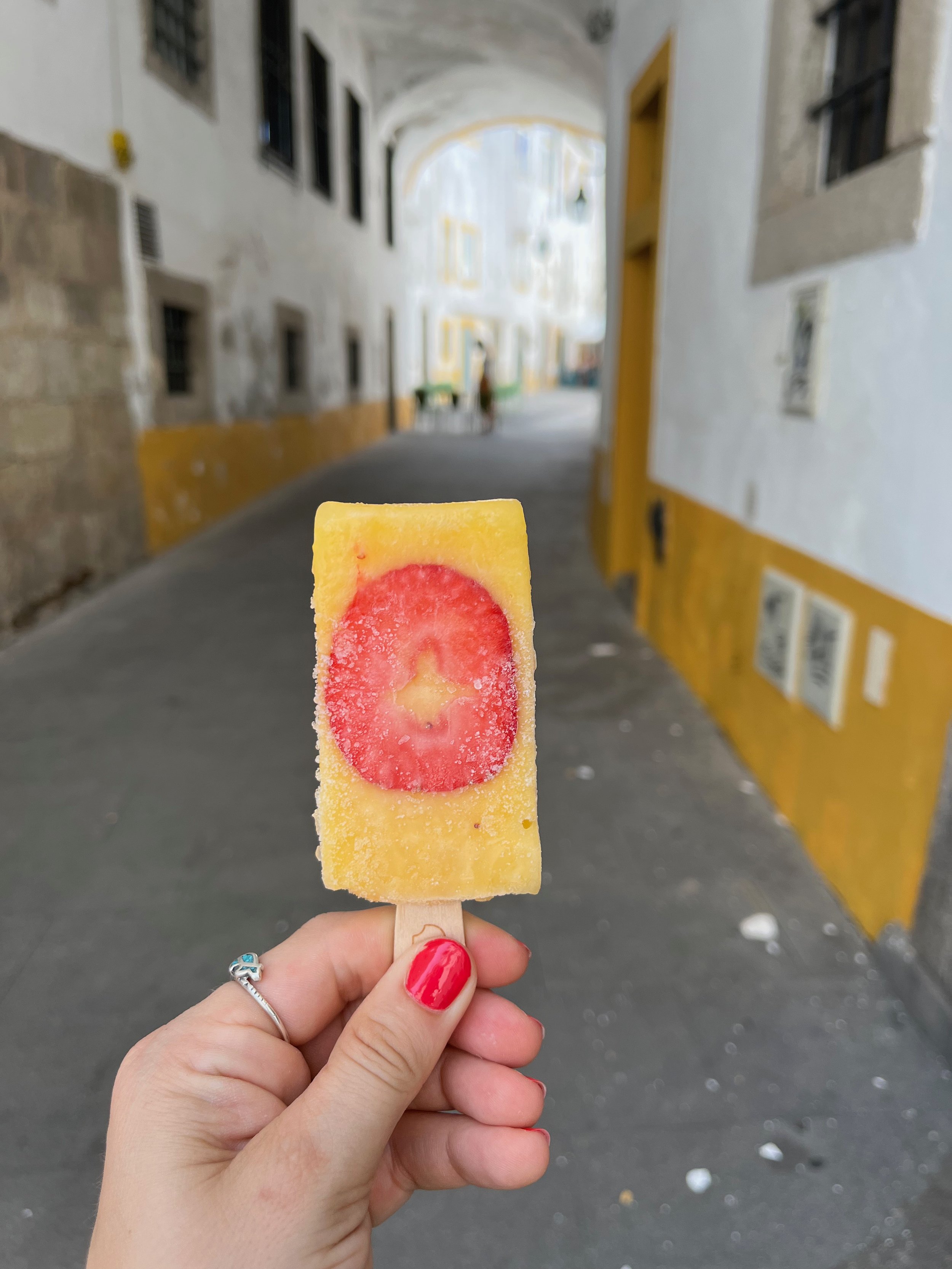In an attempt to make good on my planned itinerary for yesterday, today I went to Évora to visit the old judiaria (Jewish quarter) and look at some documents in the Biblioteca Pública da Évora – namely to see a 15th century ketubah up close and personal. It is a beautiful city yet on a variety of levels my experience of Évora was one of closed doors.
A medieval Jewish door on a street in Évora.
The day did start out well – I woke up early and on time to get to the train station, I caught every one of my somewhat confusing transportation connections, and in a fun turn of events I even realized when I got to Évora that my outfit unintentionally matched its quaint yellow-and-white walls. My plan was to go walk around the part of the city that constituted the medieval judiaria, followed the detailed explanation of it in Maria José Ferro Tavares’ As Judiarias de Portugal (The Jewish Quarters of Portugal), published in 2010. (Funnily enough, this was one of the books I was able to access in the Biblioteca Nacional back in Lisbon.) I thought this would be a great lead up to then viewing documents relevant to the very medieval Jewish community that lived there. Though, as you all know, I’ve had my challenges getting into archives this trip (and don’t worry – the rant post will come soon!), I was optimistic that this would be a great opportunity to view and experience medieval Portuguese Jewish material culture on a variety of levels.
An impressive barbican on the city’s medieval wall.
Yours truly, matching the city’s colors.
I arrived in mid-morning and did indeed have a good first hour and a half roaming the streets of the Jewish quarter, down the Rua dos Mercadores to the old medieval city wall, up Rua da Tamara (named for the appropriately food-related Hebrew word/name for tamar, or date) to the Rua da Moeda. Here’s the description I followed from Ferro Tavares:
“In a document from 1382, referring to the tenure of two stalls at the Gate of Alconchel*, the alley where they were found was said to belong to the barbican** of the fourteenth-century wall. This would mean that the road of the Jews would have extended for all of Rua do Tinhoso (now da Moeda) until its end, at the new wall. Here the Jewish quarter had a door***, the Gate of Palmeira on the side of that of Alconchel. This judiaria would be designated, in 1436, as the new judiaria. The judiaria of the 1400s was introduced on the Rua dos Mercadores (of the judiaria) by the Rua dos Banhos Velhos (Street of the Old Baths) that connected the Plaza (the current Plaza of Giraldo). Alleys without specific designation and backstreets were frequent in the space of the Jewish neighborhood, making locating them difficult today because they were integrated into the city’s architectural fabric” (Ferro Tavares 74).
And actually, following her directions, I was able to get a feel for what remained of the old Jewish quarter, including visiting a medieval door with a niche for a mezuzah. I had a sweet moment where I touched the mezuzah niche as is traditional for some Jews to do with a mezuzah upon entering a home – with a light brush and a kiss of the fingertips – which felt like a magical point of connection to a community centuries removed from me.
The sign on the Travessa do Tamara.
Rua dos Mercadores, a key street of the old judiaria.
The mezuzah niche up close — note its slight slant.
A long view of one of the winding streets of the judiaria.
However, I couldn’t help but notice that this door was no longer really a door – rather it was now a wall, blocked up with cement and unfortunately graffitied. Then, after visiting and communing with the old judiaria, around mid-day the vibe started to change. I don’t know what it was, but something just felt off. It started with me falling on my butt in the middle of the street as a biker pulled up short to the curb I was standing on, continued with the inexplicably cold affect of the servers at the café I ate in, and culminated when I walked up to the door of the Biblioteca Pública de Évora, only to be informed that today was a holiday and so the library was closed. This was particularly surprising given the fact that I had actually emailed directly with the archivist at the library and he made sure to mention that the library was a on a holiday on the 24 and 26 of June, but not of the 29th. And there was no notification on the website or on the city of Évora’s website about this closure either. Overall, these events were frustrating, but as I have learned here in Portugal – as with traveling generally – one must have patience; or as my dear friend and advisor Gloria would say in Ladino, pasensia!
The outside façada of the library, with a closed door.
Channeling this intention, I decided to make my way to the main cathedral of the city, the Sé, where I knew I would find a sculptural representation of medieval Jews on the door to the church, per Ferro Tavares’ book. The image in the book, though, is so close up I wasn’t sure where it was actually located. I finally found them after a second look at the door after my visit to the somber church. It turned out that the two Jews represented on the door, wearing the conical hats that Jews were decreed to wear, were to be found under the foot of one the twelve apostles also carved into the portico. In other words, more bad vibes – particularly connected to Jews. After this experience, a few hours before my train back to Lisbon was scheduled to leave, I must admit I could not wait to leave the city. Did I mention that the library shared the same plaza as the Palace of the Inquisition, which is now the city museum?
The building that was the old Palace of the Inquisition, now a city museum.
All said, I do genuinely hope to go back to the public library (perhaps on this trip, perhaps during future trips). And if you were to ask me, I do genuinely encourage you to visit Évora. But I think my experiences today and the sinking feel in my gut that grew throughout my day here made it clear that the history that I study is not always completely vibrant and happy. Anti-Jewish violence, persecution, and expulsion are key parts of the story of the medieval Sephardim. I firmly believe that studying this community, especially through and with food, expresses so clearly the vibrancy of this historic group of people and, as I noted yesterday, food can be a meaningful means to witness and bring to the fore the lives of so many often left out of what are considered more “official” historical accounts, who were relegated to marginalized status throughout time and place. I am convinced that food makes clear how little these “official” documents really can show us about the people of the past, which is why we so desperately need to study it and why I am so committed to doing so. But at the same time, sometimes being confronted with what remains of this history can feel really sad. And so today, it felt important to me to honor that feeling and how these closed doors bring it up – in the hopes of one day opening them again.
Always leaving room for a little sweetness to happen, even in the hard stuff!
With that note of tenuous optimism, I will leave it here for today. Until tomorrow – até amanhã!
*One of the medieval entrance through the city’s surrounding walls. Medieval cities in the Iberian Peninsula as a general rule have a defensive wall of stone, often erected under the Muslim rule of those territories, that encloses what many cities now consider the “old” city. Words like “cidade velha” or “casco viejo/ciudad vieja” usually tip you off on maps.
**A barbican is an outer defense on a medieval city’s wall, usually either a tower or a double tower over a drawbridge.
***Porta, in Portuguese, like puerta in Spanish, can mean both gate and door. For the purposes of this post I’m using door but please imagine in this case a big stone arch opening in a stone wall.










